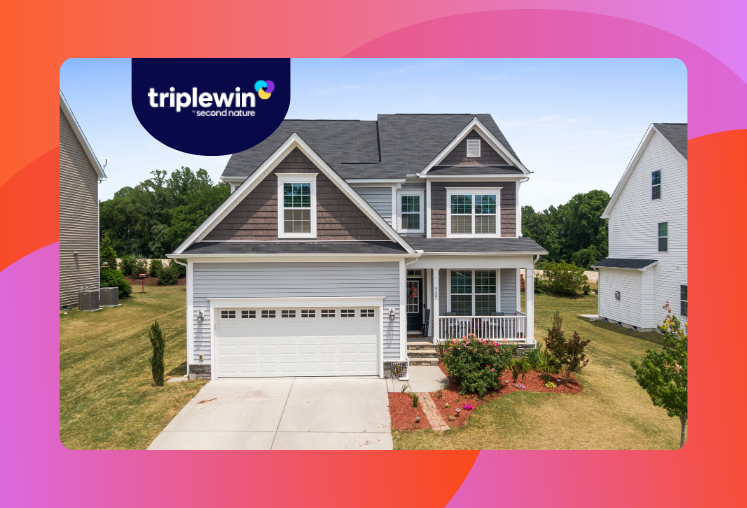Every property manager wants to minimize days on the market, and a great listing can be a critical component of accomplishing that goal. If you've spent any time looking at real estate listings, whether rentals or not, you've no doubt seen some well-done ones and ones that have five photos, three of which appear to have been taken for the TV show Hoarders.
What makes a listing strong? If you're asking this question, you're off to a good start, and you're in the right place.
Be thorough but concise
Your listing should strike a balance between being thorough and concise, but it’s important to never leave out critical information that could lead to a negative experience down the road.
First and foremost are any upfront fees, then things like pet rules, HOA considerations, and other relevancies that you don’t want a prospective resident to learn about later after they’re further into the process.
Be concise about these so your property description doesn’t become too long, but be sure to include what a renter needs to know regarding costs in the application and move-in process.
Take quality photos
Photos are the golden goose when it comes to property listings. Quality, considerate photography will create stronger first impressions from potential renters. Fortunately, getting quality photos isn’t super difficult, it just takes some planning and forethought. You don’t need to stage your property. In fact, many property managers outright recommend against it.
Photos of vacant, clean rooms are usually the way to go. They allow prospective renters to view their stuff and their layout in the photos, which can make them feel less like they’re looking at someone else’s home. Vacant rooms also tend to look bigger, and low angles with wide-angle lenses can add to this effect while showing the whole room.

Cleanliness is next to godliness. Never post pictures with boxes, garbage around, open toilet seats in the bathroom, or anything that just doesn’t look inviting. Always open blinds and include window views from rooms when possible.
You don’t need to hire professionals for these processes, but it can be worth investing in a quality camera to take nice photos. Again, this will be the first impression a renter has of your property. They’re not going to look twice if it looks small and uninviting.
Don’t overdo the property description
Be thoughtful of what goes into a property description and how you organize it. These things can get long, and if you’re a property manager, you’re keenly aware of the general public’s lack of interest in reading.
A short, one-to-two-sentence description of the property will do for an opener, and you can follow that with bulleted lists of the property’s amenities. Lists are easily consumable and where the eyes of the reader will go first if they’ve decided to skim the description instead of reading through it.
In addition to the features of the home, be sure to include nearby amenities in the listing. In single-family property management, schools and school districts tend to be important. Beyond that, nearby shopping areas, outdoor spaces and parks, and distance to highway access are things that property managers have found matter to prospective residents.
Don’t list the property until it is move-in ready
This is an easy one to check off, but making sure a home is fully ready for a resident before it gets listed is an advantageous process for property managers. You may be tempted to list it as fast as possible, but this has risks, and the theoretical shortening of time-to-revenue may end up backfiring if a great resident moves on because the home wasn't ready when they were.
Renters aren’t always proactive. They tend to be looking for properties closer to their actual desired move date than maybe they should be. Listing a property before it’s move-in ready is a great way to create a negative experience if a quality resident seeks it out and it’s not ready when they want to move in.
Include a floor plan
Employing a third party to create floor plan drawings isn’t a super expensive or difficult undertaking, and it’s worth your while. A floor plan helps a renter understand how the house as a whole is set up, how they might use the space, and how their stuff fits in the home.
There is inexpensive software that makes this process easy, or if you’re like most property managers and crunched for time, there are third parties available. This goes back to the idea of being thorough and clear in your listing. You don’t need 100 photos of the home, but you want to tell the whole story of the house as concisely as possible. A floor plan can help you do that.
Think outside the box
Ask yourself how you can make your listing unique. Checking all the boxes that make a quality listing is step one, but once you’re comfortable with that, you can ask yourself how to be a little bit different and stand out in the sea of property listings.
While not a property manager, Trent Miller has developed a viral video series that blends content marketing with property listing strategies. He calls it the speed tour, and it is exactly what it sounds like.
@trent_miller__ It's Time For Another SPEED TOUR‼️💨 Thank you guys for all the love and support!! More videos coming soon! Looking To Buy Or Sell Real Estate?? DM ME‼️🏡 ~Price Is Estimated Down Payment~ #realestate #homesforsale #RealEstate #HomeForSale #RealtorLife #DreamHome #Property #HouseHunting #NewListing #ForSale #HomeSweetHome #InvestmentProperty #OpenHouse #LuxuryLiving #HomeBuyer #HomeDecor #HouseGoals #BuyersMarket #SellingHomes #Homeownership #RealEstateAgent #speedtour ♬ original sound - trent_miller__
Garcia Property Management adds colorful overlays to the cover photos for their listings. They don't do this for every photo, so they're still following general best practices for their photo sets for each property, but also trying to stand out within the listings thanks to some color. 



